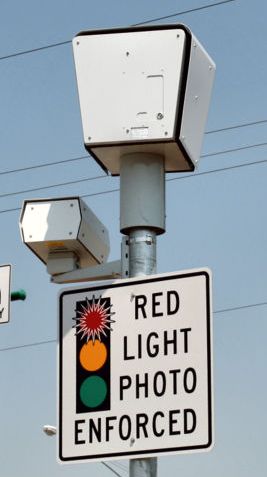District 150 may have violated the Illinois Open Meetings Act when they held their erroneously-titled “meet and greet” (it was more like a “talk and walk” or “read it and beat it”) this past Tuesday.
There’s a two-part test in the Open Meetings Act to determine when a gathering of board members becomes a “meeting” for purposes of the Act. First, there has to be a majority of a quorum. In District 150’s case, that would be three board members. Four board members were in attendance at the gathering in question: Debbie Wolfmeyer, Laura Petelle, Linda Butler, and Martha Ross. That constitutes not only a majority of a quorum, but a majority of the seven-member Board of Education. Second, the gathering has to be “held for the purpose of discussing public business.” It’s on this point that opinions vary.
District 150 officials, Billy Dennis of the Peoria Pundit, and many commenters on my blog insist that this gathering was not for the purpose of discussing public business. The superintendent candidate read a statement and the board members took questions from the press, but they didn’t discuss public business with each other — thus, no violation. Billy Dennis’ recent post indicates that the Attorney General’s office may be siding with District 150 on this matter. He quotes an e-mail he received from district spokesperson Stacey Shangraw where she says:
While we did not believe we were in violation of the Open Meetings Act, a few concerns were raised from external parties regarding our compliance of the OMA at our media event where we introduced Dr. Lathan. To ensure that our interpretation of the Act was accurate, I followed up with the Public Access Counselor.
This is the response I received today from Sarah Kaplan, a law clerk at the AG’s Chicago office, who told me she conferred with Lola Dada-Olley, an attorney in the AG’s Chicago office.
“After reviewing the information you provided us, it does not sound like the press conference (or future press conferences of this nature) violated the OMA….”
The key phrase here is: “After reviewing the information you provided us.” Of course, we don’t know what information was provided. Furthermore, we don’t know much about who’s giving the opinion. Lola Dada-Olley has been with the Attorney General’s office a little over a month, having started in January of this year according to LinkedIn. Can’t find anything on Sarah Kaplan the law clerk. However, the Public Access Counselor for Illinois is Cara Smith, and she’s in Springfield, not Chicago.
Peoria County State’s Attorney Kevin Lyons thinks they did, in fact, violate the Open Meetings Act, according to the Journal Star:
“Violations of this act always involve quirky levels, and this one is no different,” Lyons said in an e-mail response, “. . . the meeting was clearly a public meeting with notification deficits and exclusion problems. The members present were in noncompliance of the act and the (State’s Attorney’s Office) could sanction, charge, or otherwise seek any level of ‘penalty’ or remedy available.” […]
“Even a casual gathering, such as a dinner party or coincidental meeting on the sidewalk, becomes a public meeting if a majority of a quorum of a public body (or a committee, etc. thereof) is present, and discussion occurs regarding business that is before, or is likely to come before, that public body,” Lyons said….
“A public body, no matter how well-intentioned, may not hold a public meeting and define for itself who may and may not attend the meeting. Public means everyone unless they, for cause, have been ejected or barred (disruption, etc.). Posting and distribution of notices for all public meetings are set out in the act and may not be narrowed by the public body.”
Lyons wasn’t relying on information he received from District 150 in writing his opinion, and he apparently thinks what was talked about during the gathering constituted a “discussion” of public business for purposes of the Act.
But whether or not you think they violated the Act, the big question is: Does it matter in this case? After all, the press was there, and nothing was done in secret, so isn’t this much ado about nothing?
And the answer is “yes and no.” If District 150 had built up trust and credibility with the public over a number of years, I’m sure everyone would give them the benefit of the doubt and just say it was an honest mistake. But District 150 hasn’t done that. It wasn’t that long ago that District 150 agreed in closed session to purchase properties on Prospect Road adjacent to Glen Oak Park, and then actually bought the properties, all in clear violation of the Open Meetings Act. They never apologized or admitted any fault. They subsequently approved the purchases in open session, something lawyers call post-action ratification. That did tremendous damage to the public’s trust. Since then, controversial votes based on questionable information (e.g., shortening school days supposedly to improve classroom instruction, closing Woodruff supposedly to save $2.7 million) have further eroded the board’s credibility. So when an apparent violation of the Open Meetings Act occurs now, even if it’s a little thing, it’s a big deal.
The public has every right to suspect that this latest gathering violated the Open Meetings Act, and that the violation was because of either (a) ignorance or (b) wanton disregard. The public wonders, “if they’ll abuse the Act in a little thing like this, what’s to stop them from abusing it in big things when nobody’s looking?”
 The Board of Education for Peoria Public Schools District 150 will meet tonight at district headquarters on Wisconsin Avenue, 6:00 p.m. The most important item on tonight’s agenda:
The Board of Education for Peoria Public Schools District 150 will meet tonight at district headquarters on Wisconsin Avenue, 6:00 p.m. The most important item on tonight’s agenda:
 The Peoria Park District, City of Peoria, and the clandestine Kellar Branch Corridor Corporation
The Peoria Park District, City of Peoria, and the clandestine Kellar Branch Corridor Corporation  Peoria Police Chief Steven Settingsgaard says he’s not proposing red-light cameras as a way to bring more revenue into the city, but only as a way to improve safety because speeding is one of the most common
Peoria Police Chief Steven Settingsgaard says he’s not proposing red-light cameras as a way to bring more revenue into the city, but only as a way to improve safety because speeding is one of the most common